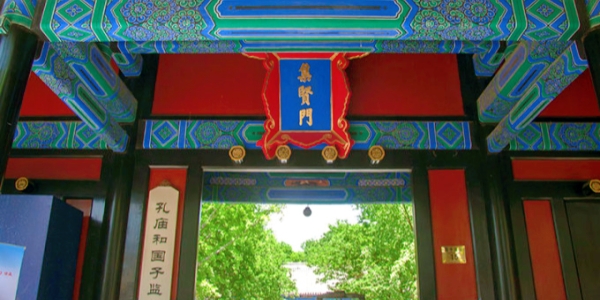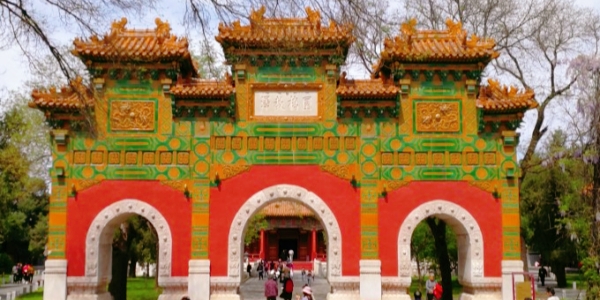Guozijian (Imperial College) Guide: Walk Through China’s Scholastic Soul
In Beijing, a city full of historical heritage, the Imperial Academy, as the highest ancient institution of learning, not only carries rich educational history, but also is an important part of Beijing culture. For those who love Beijing tourism and personal travel, Guozijian is definitely a must visit attraction. This guide will take you to gain a deeper understanding of the Imperial Academy and plan a perfect tour. If you have any questions or would like to customize your trip, please contact us!
{tour-id-1813811695057334273,1811700957664755713}
1. Overview of Guozijian: The glorious history of ancient academic institutions
The Guozijian is located at No. 15 Guozijian Street, Dongcheng District, Beijing. It was founded in the 24th year of the Yuan Dynasty (1287) and has gone through three generations: Yuan, Ming, and Qing. It is the highest institution of learning and educational administrative management established by ancient Chinese states. This place not only accepts students from all ethnic groups in China, but also receives foreign students, playing a positive role in cultivating talents from various ethnic groups in China and promoting cultural exchanges between China and foreign countries. Nowadays, the Imperial Academy has become a key national cultural relic protection unit, attracting countless tourists to visit.
2. Tour route planning: Step by step, experience the charm of the university
● JiXian Gate: As the main gate of the Imperial Academy, Jixian Gate is solemn and majestic, opening the way to the highest academic institution in ancient times. Standing in front of the door, you can feel the weight of history and the solemnity of academia.

● Taixue Gate and glazed memorial archway: Pass through the Jixian Gate and you will come to the Taixue Gate. In the Imperial College Gate stands the only glazed memorial archway specially set up for education in Beijing. The front of the memorial archway is inscribed with "Circular Bridge Jiaoze", and the back is inscribed with "Xuehai Festival View", both of which are written by Emperor Qianlong, demonstrating the dignity of the royal family and the loftiness of education.

● Piyong Hall: Piyong Hall, the central building of the Imperial College, is built on a square stone foundation. The hall has double eaves, four corners and a sharp roof, covered with yellow glazed tiles. It is the place where ancient emperors Linyong gave lectures. Standing in front of the main hall, you can imagine the grand occasion of the emperor giving lectures back then.

● Yilun Hall and Jingyi Pavilion: Yilun Hall is located on the north side of the Biyong Hall and is the place where the Imperial Academy collects books; The Jingyi Pavilion is located at the last part of the central axis of the Imperial Academy, and is a place where the emperor instructs the students of the academy. Both of these buildings are filled with a scholarly atmosphere and cultural heritage.

3. Recommended featured attractions: cultural treasures not to be missed
● Jinshi Inscription Stele: Located within the Confucian Temple courtyard (adjacent to the Guozijian), it bears the names, hometowns, and rankings of Jinshi from the Yuan, Ming, and Qing dynasties. These inscriptions are symbols of honor that many students dream of, and they are also important physical materials for studying the ancient imperial examination system.
● The Qianlong Stone Classics: Display the stone scriptures carved during the Qianlong period, which are treasures of ancient Chinese culture and contain important content of Confucian classics. Standing in front of the stone scripture, you can feel the profoundness of ancient culture.
● Cultural and creative product experience: There is also a cultural and creative store within the Imperial Academy, selling various souvenirs and cultural and creative products related to the Imperial Academy culture. Here, you can choose a favorite souvenir to bring home the culture of the Imperial Academy.
4. Practical Information Tip: Make Your Tour Smoother
● Opening hours: The opening hours of the Imperial Academy are from 8:30 to 17:00 during the off-season (November April) (closing at 4:30 pm), and from 8:30 to 18:00 during the peak season (May October) (closing at 17:00). Closed on Monday, please plan your itinerary in advance.
● Ticket reservation: It is recommended to reserve tickets in advance through the WeChat official account of the "Confucius Temple and the Imperial College Museum" to avoid waiting in line at the scene.
● Transportation Guide: Take Metro Line 2 or Line 5 to Yonghegong Station and exit at the southwest exit G. Walk about 700 meters to reach Guozijian.
5. Travel Tips: Deepen the Cultural Journey
● Participate in free lectures: Volunteers from the Imperial Academy provide free lectures at 10:00 and 14:00 every day. It is recommended to wait at the consultation booth at the entrance of the Confucius Temple in advance to gain a deeper understanding of the History and Culture of the Imperial Academy.
● Experience traditional etiquette: In the Imperial Academy, you can try to experience the traditional etiquette of ancient students, such as worshiping Confucius, touching the turtle head, etc., and feel the charm of ancient culture.
● Take photos and clock in: The Piyong Hall, glazed memorial archway and other scenic spots in the Imperial College are good places for taking photos and clock in. Why not leave your presence in front of these scenic spots and record this unforgettable cultural journey.
6. Guozijian, a cultural exploration that transcends time and space
As the highest academic institution in ancient times, Guozijian not only carries rich historical and cultural heritage, but also is a rare highlight in Beijing's tourism. Through the introduction of this guide, I believe you have gained a deeper understanding of the Imperial Academy. In the upcoming trip to Beijing, why not include the Imperial Academy in your itinerary and embark on a cultural exploration journey through time and space!
Contact Us
What Our Clients Say?
Based on 10,000+ traveler reviews













